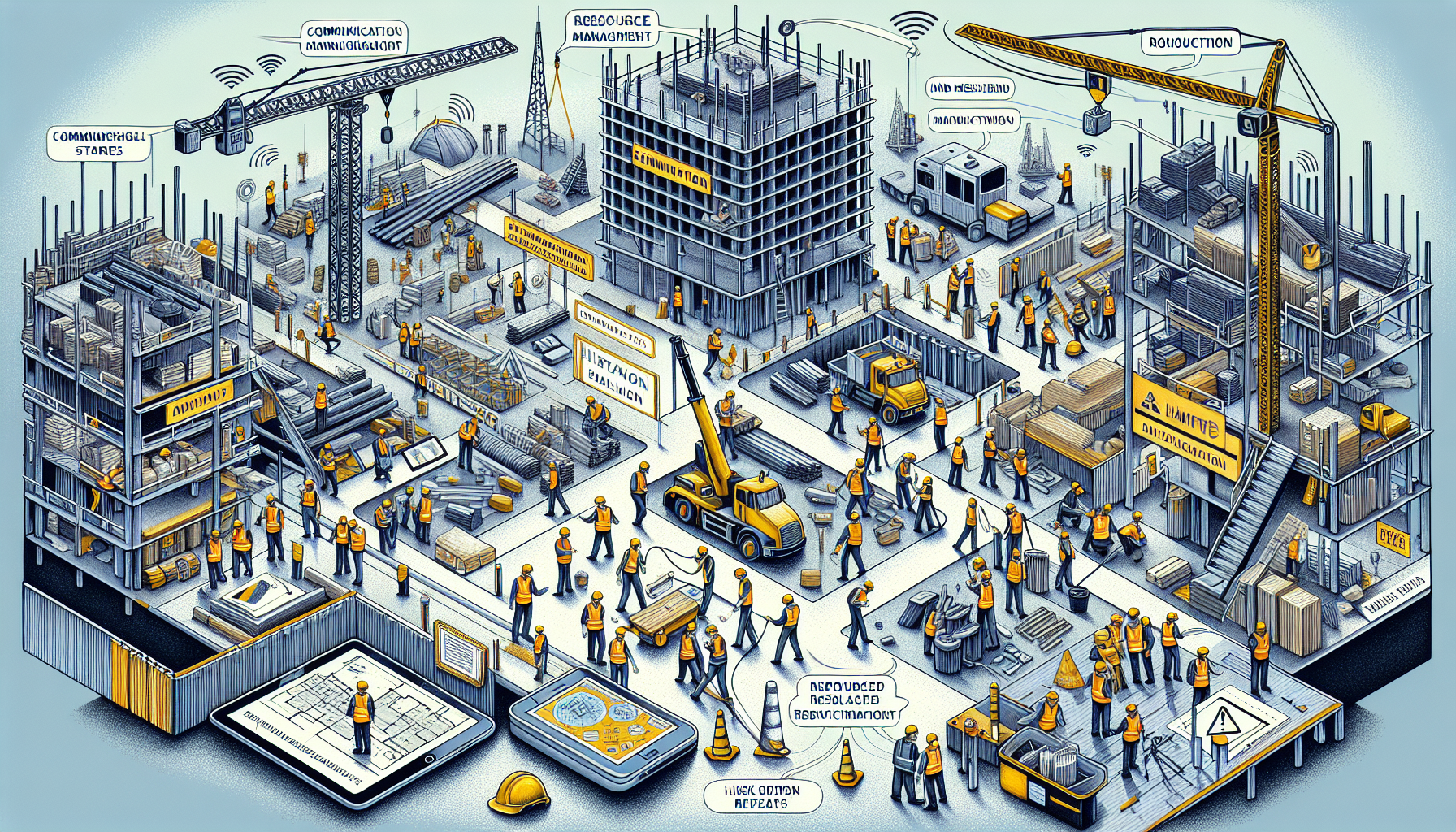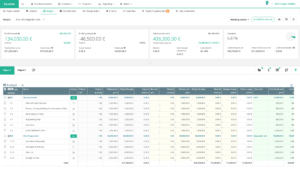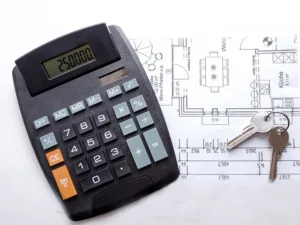Daily construction report is crucial for documenting what happens on a construction site each day. These reports track activities, resources, and any issues, ensuring smooth project management. This article will cover what goes into these reports, how to create them effectively, and why they matter.
Table of Contents
Key Takeaways
Construction daily reports are essential for documenting daily activities, weather conditions, and other critical information on a construction site, aiding in communication, risk mitigation, and project management.
Creating effective construction daily reports involves logging detailed project information, weather conditions, and work performed, which helps maintain a clear and comprehensive record of site progress.
Utilizing technology, such as mobile apps and cloud-based solutions, can streamline the reporting process, improve accuracy, and enhance overall project management efficiency.
Introduction
The construction daily report is the chronicle of a workday on a construction site, meticulously logging activities, weather conditions, and other essential information. It’s a diary that captures the essence of the day, serving as a bridge that closes communication gaps and a safety net for risk mitigation. From safeguarding protocols to settling disputes, a well-crafted daily report is a protective shield for construction companies and a beacon of progress for clients.
We will explore the components, creation, and significant role of these reports in project management.
1. Understanding Construction Daily Reports

Construction daily reports are the cornerstone of project documentation, offering a panoramic view of an ongoing construction project. They are the threads that weave the day’s narrative, ensuring that every detail, from the hum of machinery to the whispers of the wind, is captured. For construction project managers, these reports are indispensable tools that mirror the health of the construction site, providing insights and foresight into the project’s progress.
Adopting these reports fosters a culture of transparency, accountability, and foresight within the construction industry.
Key Components of a Construction Daily Report
A daily construction report includes the following details:
Project name, number, and address
Report date and author
Workforce present
Weather conditions
Tasks completed
These details are crucial for keeping track of the progress and activities on a construction site.
The report is a canvas where potential risks are painted with clarity, supported by photographic evidence. It tracks the heartbeat of the site through equipment and material logs, and it does not shy away from documenting the softer elements, like safety protocols and incidents, ensuring nothing is left to chance.
Importance for Project Managers
Construction daily reports serve as guiding compasses for project managers amidst the turbulence of construction management. These reports offer a lens to gauge the project’s pulse, manage the flow of resources, and ensure that the ship sails smoothly, adhering to the contractual and regulatory maps.
They stand as unshakeable evidence in the court of disputes, a testament to the meticulous navigation and decisions made throughout the journey of construction.
2. How to Create an Effective Construction Daily Report

Creating an effective construction daily report requires a balance between comprehensiveness and clarity. It starts with a cover page that sets the stage for the details to follow: a meticulous log of project information, a record of the day’s weather, and a narrative of the work performed. Each element plays a pivotal role in painting a full picture of the project’s daily life, providing a foundation for the following day’s work and a historical account that may prove invaluable.
Logging Project Information
In the realm of construction, the pen is mightier than the shovel, for it is through logging project information that a day’s work is immortalized. Essential details like the site address and report date are the first strokes of ink that begin the daily chronicle. Noting the construction phase provides context to the observer, setting the scene for the details that unfold.
Such diligent record-keeping ensures clear and coherent communication, serving as the cohesive factor in the project’s narrative.
Recording Weather Conditions
The whims of nature can bring a construction site to a standstill or propel it forward. Thus, the daily report bears the responsibility of documenting weather conditions with precision. A brief description at the report’s commencement can set expectations, explaining work delays or adjustments.
Weather reporting tools, integrated into software like Raken, offer a standardized approach to this task, ensuring no detail is left to the mercy of memory.
Documenting Work Performed
When the sun sets on a construction site, the daily report serves as a mirror reflecting the day’s labor. Documenting work performed with labor hours, specific tasks, and safety observations is pivotal for an accurate picture of progress. It’s the canvas where the day’s achievements and challenges are painted, informing tomorrow’s strategies and ensuring that today’s efforts are not lost to the sands of time.
3. Best Practices for Construction Daily Reporting

Best practices in construction daily reporting uphold the integrity of the construction process. Consistency, clarity, and the judicious use of templates and technology form the pillars that support an accurate and efficient reporting process.
Rather than being mere suggestions, these practices are crucial strategies that can influence a construction project’s success, helping the daily reports fulfill their role as reliable progress logs.
Consistency in Reporting
Project’s progress is similar to a drumbeat’s steady rhythm, setting the pace of a construction project. It ensures that each day’s report is a harmonious continuation of the last, providing a seamless narrative that captures the essence of the project’s journey.
Consistency is the thread that weaves through all daily reports, creating a tapestry of data that can be relied upon for informed decision-making.
Using Templates
In construction daily reporting, templates serve as blueprints that dictate the structure and content of each entry. They simplify the reporter’s task, ensuring that every report is a uniform document that speaks the same language, regardless of the author. Such standardization not only streamulates communication but also serves as a beacon of efficiency, lighting the path towards a more organized reporting process.
Leveraging Technology
In a world where digital transformation is pivotal, leveraging technology in daily reporting is a game-changer. Automation reduces the administrative burden, while construction management software turns complex data into comprehensive reports with a few clicks.
Adopting technology in construction daily reporting goes beyond staying current; it propels the industry into an era characterized by unparalleled efficiency and accuracy.
4. Benefits of Construction Daily Reports

The advantages of construction daily reports surpass simple documentation. They enhance communication, streamline resource management, and act as sentinels for risk mitigation. These reports are the lifeblood of a project, circulating critical information that keeps the various organs of construction healthy and functioning.
In a broader perspective, daily reports serve not merely as documents but as catalysts for ongoing improvement and success.
Enhancing Communication
Effective communication is the cornerstone of any successful construction project, and daily reports are the conduits through which information flows. They ensure that all stakeholders are on the same page, fostering an environment where transparency reigns and miscommunication is banished to the realm of impossibility.
Daily reports are the threads that bind the fabric of a construction project, ensuring that each stakeholder is an integral part of the tapestry.
Managing Resources Efficiently
The meticulous tracking of equipment and material usage in daily reports is akin to a master conductor orchestrating a symphony. Each entry harmonizes the use of resources, ensuring that efficiency is maintained throughout the lifecycle of the project.
Daily reports become the score from which the music of resource management is played, enabling a performance that is both effective and elegant.
Mitigating Risks
Risk mitigation is an art form in construction management, and the daily construction report is the canvas upon which this art is perfected. By documenting potential risks and the actions taken to address them, daily reports ensure that minor issues do not escalate into major crises.
They provide a safety net that catches the unforeseen, allowing projects to proceed with confidence and security.
5. Common Challenges in Construction Daily Reporting
Yet, the path of construction daily reporting is not without its hurdles. Common challenges such as incomplete data collection and time-consuming processes often stand in the way, threatening the integrity and utility of these crucial reports.
By identifying these challenges and devising strategies to counter them, the construction industry can maintain the accuracy and efficiency of daily reports, ensuring they fulfill their purpose consistently.
Incomplete Data Collection
Incomplete data collection is a chink in the armor of construction daily reporting, often leading to an incomplete picture of the project’s progress. Consistency and objectivity are the shields that protect against this vulnerability, ensuring that the full scope of the day’s activities is captured, preserving the integrity of the project’s narrative.
Time-Consuming Processes
The laborious task of compiling daily reports can be a drain on time and resources, but it need not be a Sisyphean endeavor. Streamlining reporting processes and embracing technology can turn this time-consuming task into a swift and smooth routine, liberating project managers from the shackles of inefficiency.
6. Tools and Software for Construction Daily Reporting
In this digital era, various tools and software serve as allies for construction daily reporting. Mobile apps, cloud-based solutions, and integrations with project management software are the modern-day tools of the trade, revolutionizing the way daily reports are created, shared, and analyzed.
Adopting these tools is not merely about staying updated; it’s about leveraging innovative power to take the construction process to new levels.
Mobile Apps for On-Site Reporting
The construction site is a dynamic environment where real-time reporting is crucial. Mobile apps are the scouts that navigate this terrain, enabling on-site data capture and instant communication. They are the link between the field and the office, ensuring that no detail is lost in translation and that every report is as current as the moment it’s filed. In this context, a job site like a construction site greatly benefits from such technology.
Cloud-Based Solutions
Cloud-based solutions offer the following benefits for construction projects:
Safe storage and accessibility of data from any location
Real-time access to reports and information
Flexibility to adapt to changing project needs
Seamless reporting capabilities
These solutions break down the barriers of time and location, providing a digital seascape for daily reports and ensuring the smooth sailing of construction projects.
Integration with Project Management Software
The integration of daily reporting tools with project management software offers several benefits, including:
Enhancing the overall workflow and project tracking
Creating a seamless ecosystem where data flows freely
Supporting informed decision-making
Ensuring a cohesive approach to project management
These integrations are like the gears in a well-oiled machine, working together to improve efficiency and effectiveness.
7. Real-Life Examples of Effective Construction Daily Reporting
The proof of the pudding is in the eating, and real-life examples of effective construction daily reporting serve as the tasting menu. From improved safety standards to on-schedule project completions, these case studies showcase the tangible benefits of diligent daily reporting, providing inspiration and validation for construction professionals everywhere.
Case Study 1: Large-Scale Commercial Project
In the case of a large-scale commercial project, daily reporting played the role of a vigilant guardian, overseeing safety compliance and significantly enhancing overall safety standards. This meticulous approach not only protected the workforce but also streamlined coordination among the various players involved, resulting in a symphony of efficiency and excellence.
Case Study 2: Residential Development
A residential development project serves as another testament to the power of daily reporting. Here, the daily logs were the rudders guiding the project, identifying potential delays early and allowing for swift corrective measures.
The result was a project that flowed smoothly, navigating the waters of construction with precision and grace.
8. Free construction daily report template
To aid in the creation of construction daily reports, a free template is available that streamlines the process. This template, which can be customized to meet the day’s specific requirements, includes fields for all necessary information, from construction activities to resource tracking. It ensures that each report is complete and accurate, serving as a reliable document for stakeholders and a valuable tool for project managers.
Download free construction daily report template
9. Summary
In the tapestry of construction management, daily reports are the threads that connect the past, present, and future of a project. They are the repositories of knowledge that empower project managers, the communication lifelines that bind teams, and the historical records that protect and validate. Embracing the strategies outlined here can transform the mundane task of reporting into a cornerstone of success. May these insights inspire you to elevate your construction daily reporting to the pinnacle of efficacy and precision.
10. Frequently Asked Questions
What is construction daily report?
A construction daily report is a reliable record of a day’s work at a construction site, capturing numerous details like work performed, resources used, and any incidents or delays. It is a critical tool that ensures the smooth handoff of information from one workday to the next, providing a legal defense when required and keeping stakeholders informed about the project’s status.
In essence, it is the day-to-day biography of a construction project, chronicling every step towards completion.
What is included in a construction daily report?
A construction daily report includes:
A construction daily log of site conditions, managed through construction daily log software
Personnel counts
Prime contractor activities
Subcontractor contributions
Remarkable occurrences such as visits or accidents
Material and equipment flow
Tests and inspections
Vital communications from meetings
This report is a storyboard, complete with photos and sketches, that provides a visual and written account of the project’s progress and how much progress has been made in the construction.
How do you write a construction daily report?
The process of writing a construction daily report demands meticulous attention to detail and a structured methodology. It begins with basic job details and weather conditions, then unfolds to reveal:
Completed tasks
Workforce contributions
Equipment usage
Material consumption
Delivery delays
Safety incidents
Potential project disruptions
Including photos and relevant documents enhances the report, making it a comprehensive dossier of the day’s work.
Why are construction daily reports important?
Construction daily reports serve several important purposes in a project:
They act as protectors, securing the interests of all involved parties.
They deter miscommunications and prevent unnoticed issues from escalating.
They provide a transparent view of progress.
They help in managing time, resources, and risks effectively, ensuring that projects stay on course.
They are the historical records that demonstrate due diligence and can be decisive in the resolution of disputes.
How often should construction daily reports be completed?
Construction daily reports should be completed at the end of each workday to ensure accurate capture of the day’s activities and incidents. This helps in maintaining up-to-date records.
What is the best way to ensure the accuracy of a construction daily report?
To ensure the accuracy of a construction daily report, utilize templates, incorporate crew input, and leverage technology like construction daily log software and mobile apps for significant improvements.
Can photos be included in construction daily reports?
Yes, including time-stamped photos and videos in daily reports is a best practice that provides visual documentation of progress and site conditions. This helps in maintaining a comprehensive record of work.
How can construction daily reports enhance project management?
Construction daily reports enhance project management by providing a clear view of project progress, documenting issues and risks, and facilitating communication. They play a crucial role in enhancing overall project management and decision-making.
What should be done if a construction daily report is missed?
If a construction daily report is missed, it should be completed as soon as possible to avoid gaps in the project’s documentation and potential risks. Timely and consistent reporting is crucial for the project’s success.
Related posts
Read our other articles where you can find useful and relevant information about construction reporting:
- Construction Progress Reporting: Your Comprehensive Guide to Improved Project Tracking
- All You Need to Know About Construction Reporting: Strategies & Benefits
About the Author

Taavi Kaiv
Taavi Kaiv is a construction specialist with over ten years of experience in the construction industry. Taavi is an accomplished construction project manager with many successful projects that have been completed under his guidance. Taavi holds a master’s degree in construction management from the Tallinn University of Technology. View profile






